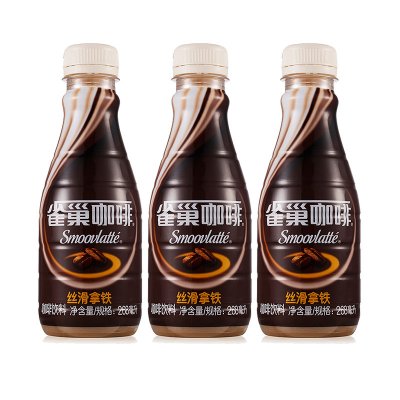Pu'er is the main coffee producing area in China. Nestl é coffee via Starbucks, Wang Zhongxue, Nestl é and Chinese enterprises.
"generally speaking, the fruit of the first wave is not very good. The best is the second and third waves, and the best is the fruit of the fourth wave. "Wang Zhongxue constantly emphasizes the fullness of coffee beans for fear that others will not understand. Because it determines the thickness of the money he put into his pocket from Nestle.
Wang Zhongxue, an authentic Pu'er farmer in Yunnan, now specializes in growing coffee.
Nestl é does not operate any of its own commercial coffee plantations around the world, and all coffee beans are purchased. Because the designated buyer, Nestle Coffee, only needs the best fruit in order to control the quality of coffee, so Wang attaches great importance to the quality of his coffee beans.
As early as 1996, Wang Zhongxue formed a bond with Nestl é. In fact, Nestl é took root in Yunnan as early as 1988. In 1992, Nestl é launched its first coffee agronomic service department in Yunnan. Wang Zhongxue was still growing mangoes at that time, and after the establishment of the coffee agronomic service department, his neighbors had gradually reached an agreement with Nestl é on fixed-point sales.
After Nestl é entered Pu'er, it not only brought fresh technology, but also brought the hope of increasing economic income. Nestl é pays attention to the local sustainable development, from the training of planting technology to helping producers to diversify and become rich, Nestl é can be found in every link. In China, Nestl é not only buys coffee beans in Yunnan, but also sets up coffee production plants in Dongguan, Guangdong Province and Laixi, Shandong Province.
"growing coffee can only make a living, but you can't make a lot of money." After saying this, Wang Zhongxue himself was amused by himself. In fact, Wang Zhongxue caught up with the good era of growing coffee. By growing coffee, Wang Zhongxue bought a building and a car. The fruit of coffee completely changed his life.
Recently, Nestl é officially opened a coffee center with an investment of 50 million yuan in Pu'er, indicating that Nestl é regards China as a more important global market. Wang Zhongxue, on the other hand, hopes to learn more about planting or to learn some new skills of raising chickens. He wants to buy another house.
Like Wang Zhongxue, the ambitious Nestle Coffee is also taking the development model of the whole industry chain.
Deeply integrated into Pu'er
Wang Zhongxue's warehouse has about 12 tons of coffee beans packed in gunny bags, which Wang Zhongxue says is the best fruit. I'm going to sell it to Nestle as agreed.
These 12 tons of coffee beans will generate about 60,000 yuan of economic income for Wang Zhongxue. In spite of this, Wang Zhongxue still has some regrets. This year's harvest is particularly good, but the global purchase price has dropped, from 18.2 yuan last year to 15.52 yuan per kilogram.
"without Nestl é, my coffee beans wouldn't grow so well, and science can really change everything." Wang Zhongxue said.
The agronomist of Nestl é visits his coffee forest twice a year to teach Wang Zhongxue how to produce fuller fruit. So far, Wang Zhongxue has participated in 10 Nestle coffee training courses, and his planting area has grown from 0.7 hectares to 4.5 hectares.
Paul Bokai, CEO of Nestl é, said that Nestl é trains more than 2500 coffee growers every year, and Nestl é has trained more than 16000 people in Pu'er alone. The number of people who have benefited from coffee cultivation has reached more than 36000. Nestl é has sent a team of experts, including six foreign coffee agronomists, to Pu'er to solve the problems encountered by farmers in growing coffee.
With Nestl é positioning China as an important market, the modern Pu'er Nestle Coffee Center has become one of its iconic developments. The main task of the Coffee Center, which has been held in late March, is to provide professional training for farmers to help them grow coffee correctly.
Because young people do not have much experience in agriculture and coffee cultivation, the center offers programs to encourage the younger generation to grow coffee and help them get appropriate support and opportunities.
In addition, Nestl é has set up a scholarship program in Pu'er to help the children of farmers, pay attention to the training of local agricultural talents in the future, and inject new talents into the sustainable development of the coffee industry in Yunnan. "Nestl é Coffee Center integrates training, technical support, experiments and modern warehousing, which promotes this win-win cooperation to a new level. it has also built a larger platform for us to cooperate, exchange and share with scientific research institutes and the whole industry." Nestl é Greater China related sources said.
It is understood that the Nestle Coffee Center, which covers an area of 30,000 square meters, includes two major functional areas, one is the Nestle Coffee planting and training Center and the raw coffee bean testing room, providing exchanges and training for farmers, agronomists, and coffee professionals; the other is the quality assurance laboratory and integrated processing and storage facilities. With the continuous growth of local coffee bean production, the center will provide production and processing facilities to ensure coffee bean procurement, as well as quality procurement and testing benchmarks based on international standards.
All have to be diversified.
"this year is more than 2 yuan per kilogram less than last year." Wang Zhongxue planned that these coffee beans could have been sold for more than 20 yuan two or three years ago.
Wang Zhongxue remembers that since growing coffee, there have been two explosive increases in his income, and the price of coffee beans once soared to 40 yuan per kilogram. In these two opportunities, Wang Zhongxue doubled his economic income, spending more than 500,000 on buildings and more than 100,000 on cars.
If the purchase price of coffee stays at this stage, maybe coffee growers can laugh every day, but the price will come down eventually. Although Wang Zhongxue is looking forward to the opportunity of a high price of 40 yuan to appear again, he also has to soberly face the decline in prices.
Today, he also grows mangoes and raises chickens, ducks and pigs to achieve diversified ways to get rich.
The diversification of Wang Zhongxue may also be in step with the diversified development of Nestle. Two years ago, Nestl é invested in a dairy farming training center in Heilongjiang, from milk to coffee, forming a whole industry chain. But on the road to diversification, maybe Nestl é will make some moves next. "I am never satisfied, and there is still a long way to go." Paul Brocade replied to Nestl é's diversified path. Another Nestl é coffee person said, "We have always encouraged farmers to diversify, which can improve the economic level or reduce operational risks."
With regard to Nestl é's development ideas, Paul Bokai said that Nestl é's investment is based on long-term development, and the purpose of this investment is to provide better services to the coffee industry. Worldwide, Nestl é deals directly with more than 700,000 farmers, all of which are similar to this. Nestl é has sent more than 130 agronomists around the world according to the size of the local market and the economic situation. "apart from coffee, we are making all the other major raw materials in the same form. Because staple products such as coffee, cocoa and milk are very important to us, we pay great attention to this aspect. We will also share with them the practical experience gained from planting other raw materials here. " Paul Bokai said. Nestl é is based on Pu'er and is committed to developing coffee cultivation in Yunnan. Over the past 30 years, through cooperation with the local government and the vast number of farmers, not only the coffee industry has been promoted, but also the development level of the local agricultural community and the living standards of farmers have also been significantly improved, which is a vivid embodiment of Nestl é's concept of creating shared values. " Zhang Guohua, chairman and CEO of Nestl é Greater China, said.
A beautiful story
A few years ago, people from Starbucks came to ask Wang Zhongxue, "if a boss pays a high price for your land, will you sell it?"
Wang Zhongxue asked, how much is it? The man said 10,000 yuan per mu of land. "I'm not interested in your ten thousand yuan." Wang Zhongxue is a little angry. An acre of land creates an economic value of about 20,000 yuan a year, and it continues to flow. Wang Zhongxue hopes that this day will continue and get better and better.
According to relevant statistics, coffee is one of the most popular drinks in the world today, with global consumption of more than 1.5 billion cups a day. To meet the global demand for coffee, 25 million farmers in more than 80 countries are engaged in coffee cultivation. At present, the annual output of coffee in the world exceeds 8 million tons. Coffee is one of the most important agricultural products in the world.
Brazil is the world leader in the production of raw coffee beans, accounting for 1/3 of the world's coffee supply. Vietnam and Colombia are closely followed by the world's second and third largest coffee producers, respectively.
Pu'er is the main producing area of coffee beans in China.
In 1939, the Nestle research and development team invented instant coffee, and the brand "Nestle Coffee" was listed. After Nestle's continuous improvement and strong marketing, today, the world consumes 5800 cups of Nestle coffee per second. In order to meet consumer demand, Nestl é has set up 26 Nestle coffee plants around the world, two of which are located in China. "Nestl é has not only R & D centers in Beijing, but also a R & D network in Beijing, Shanghai, Xiamen and Dongguan. In this R & D network, we not only do research on technological production methods, because we also attach great importance to the understanding of changes in consumers' tastes and consumers' pursuit of changes, thus using these concepts to develop new products." According to Zhang Guohua, in the past few years, Nestl é has seen several very clear development directions, that is, changes in consumer tastes, one is the increasing pursuit of health, one is high-end, the other is natural raw materials, and the other is the convenience of the product to use. We can see that there is something in common in both beverages and food. Through these R & D centers, Nestl é has developed different products to meet the needs of consumers in these areas.
It is understood that Nestl é has wholly-owned companies and investment companies in China, and the entire R & D network covers not only the products of wholly-owned companies, but also those of joint ventures, including products from Xu Fuji and Yinlu. New products developed by these cooperative R & D networks will be introduced to the market. "by observing the changes in consumers' tastes, we noticed that some people like to drink coffee without sugar or hope that there is no sugar in this product, so we launched a sugar-free 1: 2 coffee last year, and the market response to this product is very good. There have been a lot of fans in a short period of time." Zhang Guohua said.
Nestl é hopes to achieve a win-win result in its cooperation with Chinese enterprises, and in fact this hope is gradually being realized. Since Nestl é invested in Madame in 1999, the brand has developed rapidly. After Nestl é bought Yinlu in 2011, the slippery iron coffee jointly produced by the two sides has also been recognized by the market. "so in terms of joint ventures, in addition to working with local brands, on the other hand, we use the capabilities of joint ventures to improve our capabilities." A person at Nestle Coffee said. "Nestl é and Coffee is a very beautiful story that has happened in many countries around the world, and the story has lasted for many years. We, Nestl é, hope to create shared value with the locals. The so-called creation of shared value is to link the success of our company with the success of the community and the success of the environment. The best explanation is the local development of projects such as coffee, cocoa and milk, which is also our long-term commitment to China and Pu'er. " Paul。 Bokai said.
Perhaps Nestle will have more stories to tell in China in the future, and the fate of growers such as Wang Zhongxue is closely related to it.

Important Notice :
前街咖啡 FrontStreet Coffee has moved to new addredd:
FrontStreet Coffee Address: 315,Donghua East Road,GuangZhou
Tel:020 38364473
- Prev

Latest Coffee News Australian Coffee Culture: native Coffee Culture "forces" Starbucks
People who regard food as the most important thing like to mark a city or a country with a dish or a kind of food. Well, for Melbourne, Australia, which is mixed by multi-ethnic immigrants, the world has heard more about Australian grape wine, while coffee is closer to the life of local people. Melbourne is the coffee capital of Australia, with Paris, Vienna, Seattle, Havana, Vancouver and Sao Po
- Next

Health and Coffee Coffee Cellulose reduces the risk of Colon Cancer drinking Coffee every day reduces the risk of recurrence of colon cancer
Drinking coffee every day reduces the risk of recurrence of colon cancer Coffee is a caffeinated drink made from roasted coffee beans. It is a major drink popular around the world along with cola and tea. Whether coffee affects health has always been a topic of great concern to many people, and scientists have been debating it for many years. Recently, science from the Dana Farber Cancer Center in the United States
Related
- How did the Salvadoran coffee industry develop in Central America?
- What exactly does the golden cup extraction of coffee mean?
- The Origin of Coffee flower
- [2023 Starbucks World Earth Day] there are more meaningful things besides free Starbucks coffee!
- What kind of coffee is there in Spain? 9 Flavors of Spanish Coffee
- Aromatic African coffee| Kenya's coffee culture and historical production area
- Liberica Coffee Bean knowledge: the characteristics of Liberian Coffee beans of the three original species of Coffee beans
- The origin and formula of Spanish latte introduces the taste characteristics of Bombon coffee in Valencia, Spain.
- How to adjust the solution of over-extracted coffee
- What is the tasting period of coffee beans? What is the period of coffee and beans? How should coffee wake up and raise beans?

